Ultimate Guide to Moss Cultivation for Zen Gardens
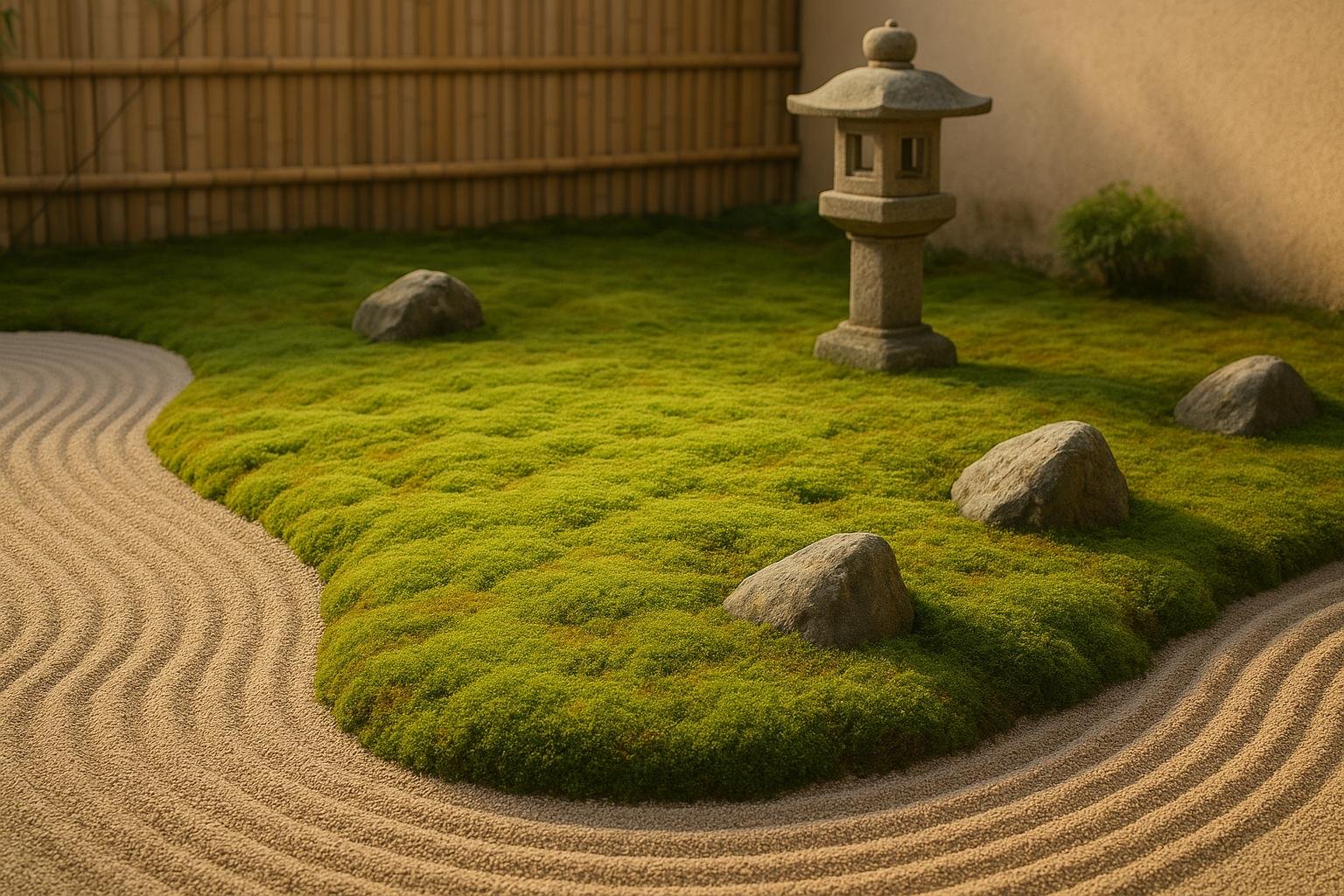
Moss is a key element in Zen gardens, offering a calming green backdrop and enhancing the serene atmosphere. This guide covers everything you need to know about cultivating moss, from selecting the right types to setting up and maintaining your garden.
Key Takeaways:
- Why Moss? Moss provides year-round greenery, requires minimal maintenance, and thrives in shaded, moist areas.
- Choosing Moss: Popular types include Cushion Moss, Sheet Moss, and Haircap Moss. Match the species to your local climate and garden conditions.
- Setup Tips: Create elevation changes, use rocks for shade, and ensure proper drainage.
- Care Basics: Water lightly and frequently, maintain consistent moisture, and protect against pests and extreme weather.
- Use Tools: Tools like AIGardenPlanner can help design layouts and choose moss types suited to your area.
How to Grow Moss - Part One | Our Japanese Garden Escape

Selecting Moss Types
Choosing the right moss for your garden means considering your local climate, soil, and light conditions. Picking species that naturally thrive in your area ensures they establish well and flourish over time.
Common Zen Garden Moss Types
In Zen gardens, moss adds texture and tranquility. Here are a few popular options, along with their characteristics and ideal growing conditions:
| Moss Type | Characteristics | Ideal Conditions |
|---|---|---|
| Cushion Moss (Leucobryum glaucum) | Dense, mound-like growth | Prefers shaded environments |
| Sheet Moss (Hypnum cupressiforme) | Spreads like a soft carpet | Grows well in moderate shade |
| Haircap Moss (Polytrichum commune) | Upright, textured appearance | Suited for partial shade |
Each type brings a unique texture, adding depth and calmness to your Zen garden.
Moss and Climate Zones
Matching moss to your climate is a key step for success. Here’s what to keep in mind:
- Temperature tolerance: Check if the moss aligns with your USDA hardiness zone.
- Moisture levels: While most mosses need consistent moisture, their specific humidity needs can vary.
- Light exposure: Many moss varieties thrive in filtered sunlight, especially during cooler parts of the day.
Local conditions, like urban heat islands or coastal breezes, can influence how moss grows. Use tools like AIGardenPlanner to input your area’s specifics for personalized recommendations.
As your moss acclimates, keep an eye on its progress and tweak care routines as needed.
Garden Setup for Moss
Creating the right layout is key to encouraging healthy moss growth and achieving a peaceful, Zen-like atmosphere. Once you've chosen the moss varieties, setting up your garden thoughtfully can make all the difference.
Moss Garden Layout
Here are some important factors to keep in mind when designing your moss garden:
- Add slight elevation changes to naturally direct water flow and create distinct zones.
- Position rocks and other natural features to provide shade and enhance the garden's visual appeal.
- Ensure proper drainage to avoid waterlogging while keeping the soil moist.
For tailored advice, you can use tools like AIGardenPlanner to input your garden's dimensions and sun exposure for customized layout suggestions.
🚀 Ready to Reinvent Your Garden?
Join thousands of homeowners who have transformed their gardens using our AI design tool. Upload one photo to explore endless possibilities.
Get your AI garden designs →Moss Growing Methods
Portable moss setups can add flexibility to your Zen garden. One example is Kokedama - a moss-covered ball that can be moved around to create different garden zones as the seasons change. These techniques work well alongside the foundational garden setup approaches mentioned earlier.
"Consider using AI-powered tools like AIGardenPlanner to generate design ideas and visualize how portable moss features can be integrated into your Zen garden"
sbb-itb-4d6a8dd
Moss Garden Care
Managing water is key to keeping moss thriving in Zen gardens. Tailor your watering routine to your area's temperature, sunlight, and humidity. Avoid sticking to a rigid schedule - instead, adjust as needed to ensure the moss stays hydrated without being overwatered. This approach helps maintain the right moisture balance for healthy growth.
AIGardenPlanner for Moss Gardens
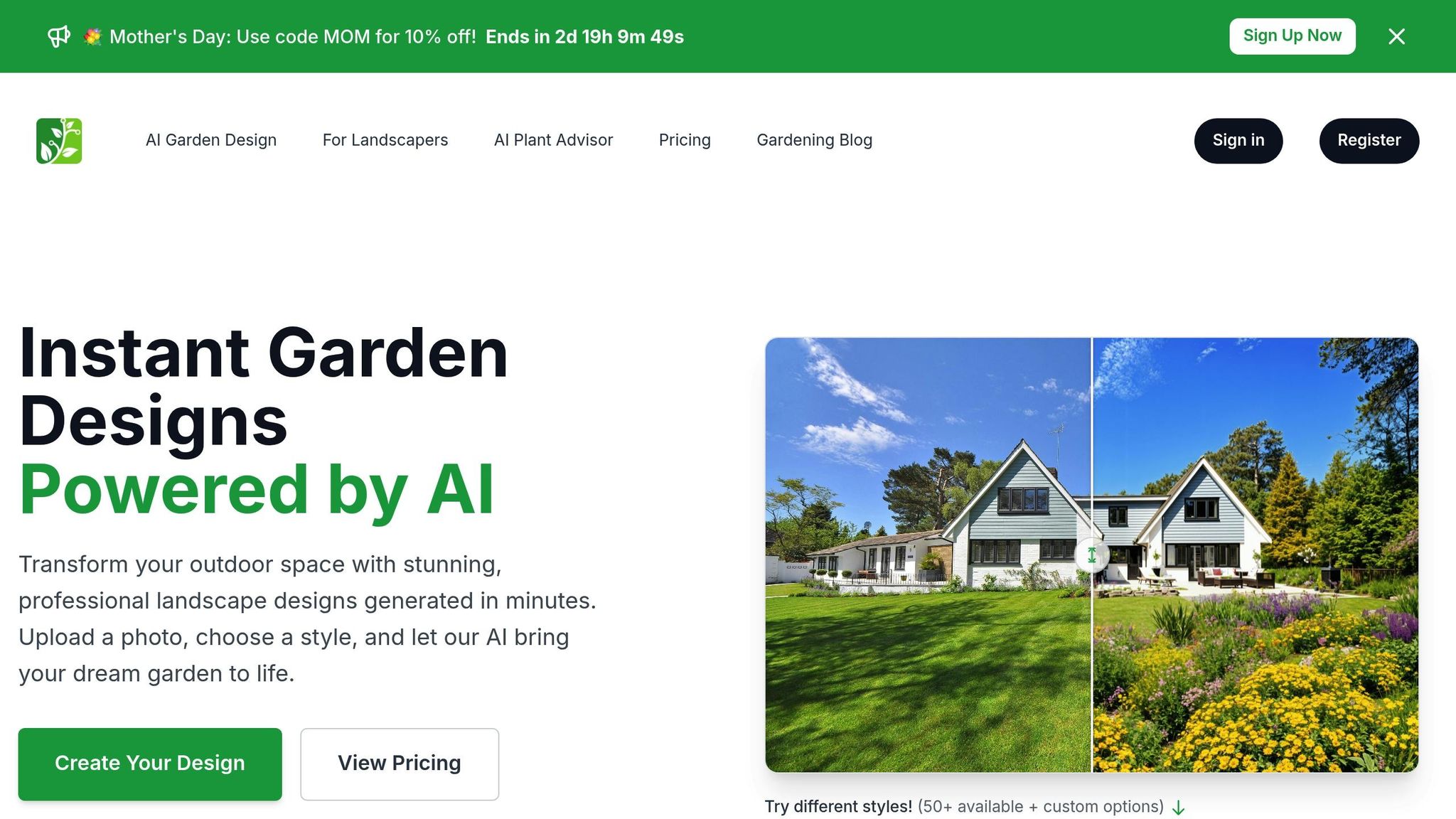
Combine modern tools with classic gardening techniques to perfect your moss garden.
AIGardenPlanner uses AI to turn your garden photos into personalized designs, ensuring optimal conditions for moss growth.
AI Design Features
The AI-powered system creates customized layouts to improve your garden's structure and visual appeal.
Moss Layout Tools
Templates inspired by Japanese Zen gardens allow you to explore various moss arrangements.
| Design Feature | Benefit |
|---|---|
| Japanese Zen Templates | Ready-to-use layouts tailored for moss gardens |
| Custom Style Creation | Design your own moss patterns (available in Starter plan and higher) |
| High-Resolution Downloads | Clear, detailed views of moss placement |
| Multiple Project Support | Create and manage designs for different garden areas |
Moss Type Selection
The AI Plant Advisor evaluates your location and climate to suggest moss species suited to your environment. Each suggestion comes with detailed care guides and maintenance tips to help your moss thrive. On average, AIGardenPlanner users save over 4 hours per design compared to traditional methods.
For professionals, the Pro plan ($49/month) unlocks advanced features like up to 200 AI-generated photos per month and commercial licensing options.
Once your design is ready, you can move on to address common challenges in moss gardening.
Moss Problem Solutions
Taking care of moss gardens often means addressing specific challenges. Here are practical solutions for common moss issues.
Pest Control
Protect your moss from pests using natural methods. For slugs, sprinkle a light layer of food-grade diatomaceous earth around the edges of your moss. Studies from Oregon State University show this approach reduces pest damage by 70–80%.
To manage mites, mix 1 teaspoon of neem oil with a quart of water and spray weekly in the early morning. If your moss shows unusual colors, it might signal moisture or pH problems.
Color Problem Fixes
Address discoloration in moss by identifying the cause and applying the right solution:
| Issue | Cause | Solution |
|---|---|---|
| Yellow Patches | Overwatering | Keep soil humidity between 40–60%. |
| Brown Areas | Underwatering or sun damage | Use a 30% shade cloth during temperatures above 85°F to provide shade. |
| Dark Spots | pH imbalance | For alkaline soils, apply lime pellets (1 tablespoon per square foot). |
Check soil moisture daily and adjust watering as needed. Most moss types do well with 2–3 light mists per day during dry weather.
City Garden Care
Urban moss gardens face unique challenges. To reduce pollution exposure, set up a bamboo fence (12–18 inches high) on the upwind side. If winter salt damages your moss, flush the soil with 1 gallon of rainwater per square foot after the snow melts.
"MOSSAIR® units demonstrated 30% PM10 reduction in urban environments" – Technical University of Munich 2019
For high-traffic areas, use flat stones spaced 2–3 inches apart to create pathways. This minimizes compression damage while keeping the garden visually appealing. Plant Hypnum imponens near walkways to promote faster recovery.
Additional care tips for urban moss gardens include:
- Using soft bamboo brushes (such as Takayama brand) for gentle cleaning
- Rinsing monthly with distilled water to remove pollutants
- Spraying a diluted vinegar solution (1 part vinegar to 3 parts water) to discourage pets
- Choosing hardy species like Bryum argenteum, which tolerate pollution better
During extreme weather, protect your moss with coverings. Use a 30% shade cloth when temperatures exceed 85°F (29°C), and cover the garden with burlap secured by bamboo stakes if temperatures drop below 20°F (–6°C). These steps have helped achieve a 90% survival rate for moss gardens in USDA zones 6–8.
🎨 Visualize Your Dream Garden Today!
Transform any outdoor space into a professional landscape design in minutes. Just upload a photo, choose your style, and let our AI do the rest.
Start your garden transformation now →Conclusion
To wrap up your moss garden project, focus on the care, setup, and design strategies we've covered. When properly nurtured, moss becomes a key feature of Zen gardens, offering a peaceful and vibrant green setting.
Successful moss cultivation depends on managing water, keeping the area clean, and protecting it from harsh weather. Using tools like AIGardenPlanner can make this process easier. Its advanced features allow gardeners to plan and visualize their moss layouts while providing AI-driven tips to match moss varieties with local growing conditions.
Think of your moss garden as a living system. Keep the soil healthy, provide adequate shade, and protect it during seasonal changes. Whether you're crafting a cozy meditation space or a larger Zen retreat, your moss garden can be a lasting symbol of tranquility.
FAQs
How can I successfully grow moss in a small urban garden despite pollution and limited space?
To grow moss in a small urban garden, start by selecting pollution-tolerant moss species that thrive in shaded areas. Ensure the soil is well-prepared with good drainage and use rainwater or filtered water to avoid chemicals that could harm the moss. Regularly clear debris and monitor for any issues like excessive dryness or pests.
For tailored guidance based on your location and garden conditions, you can explore tools that provide personalized plant recommendations and care strategies. With the right planning and maintenance, your moss garden can flourish even in challenging urban settings.
How can I incorporate portable moss arrangements like Kokedama into a traditional Zen garden design?
Integrating portable moss arrangements, such as Kokedama, into a Zen garden can add a dynamic and versatile touch to your space. These moss-covered balls, often paired with small plants, can be placed on flat stones, displayed on wooden pedestals, or hung from tree branches to create a harmonious connection with nature.
To blend Kokedama seamlessly into your Zen garden, focus on simplicity and balance. Choose placements that complement the garden’s existing elements, such as raked gravel patterns or larger moss beds. Ensure the moss remains moist by misting regularly, especially in dry climates, and consider rotating the arrangements occasionally to maintain even growth. This approach enhances the serene, meditative atmosphere of your Zen garden while showcasing the beauty of moss in a unique way.
How can AIGardenPlanner help me choose the right moss for my garden and climate?
AIGardenPlanner simplifies the process of selecting the ideal moss for your Zen garden by offering personalized plant recommendations tailored to your location, climate, and gardening preferences.
This AI-powered tool considers factors like regional weather patterns, soil conditions, and your desired garden style to ensure the moss you choose thrives in your environment. It’s an easy and reliable way to create a lush, serene space with minimal guesswork.
Related posts
Related Articles
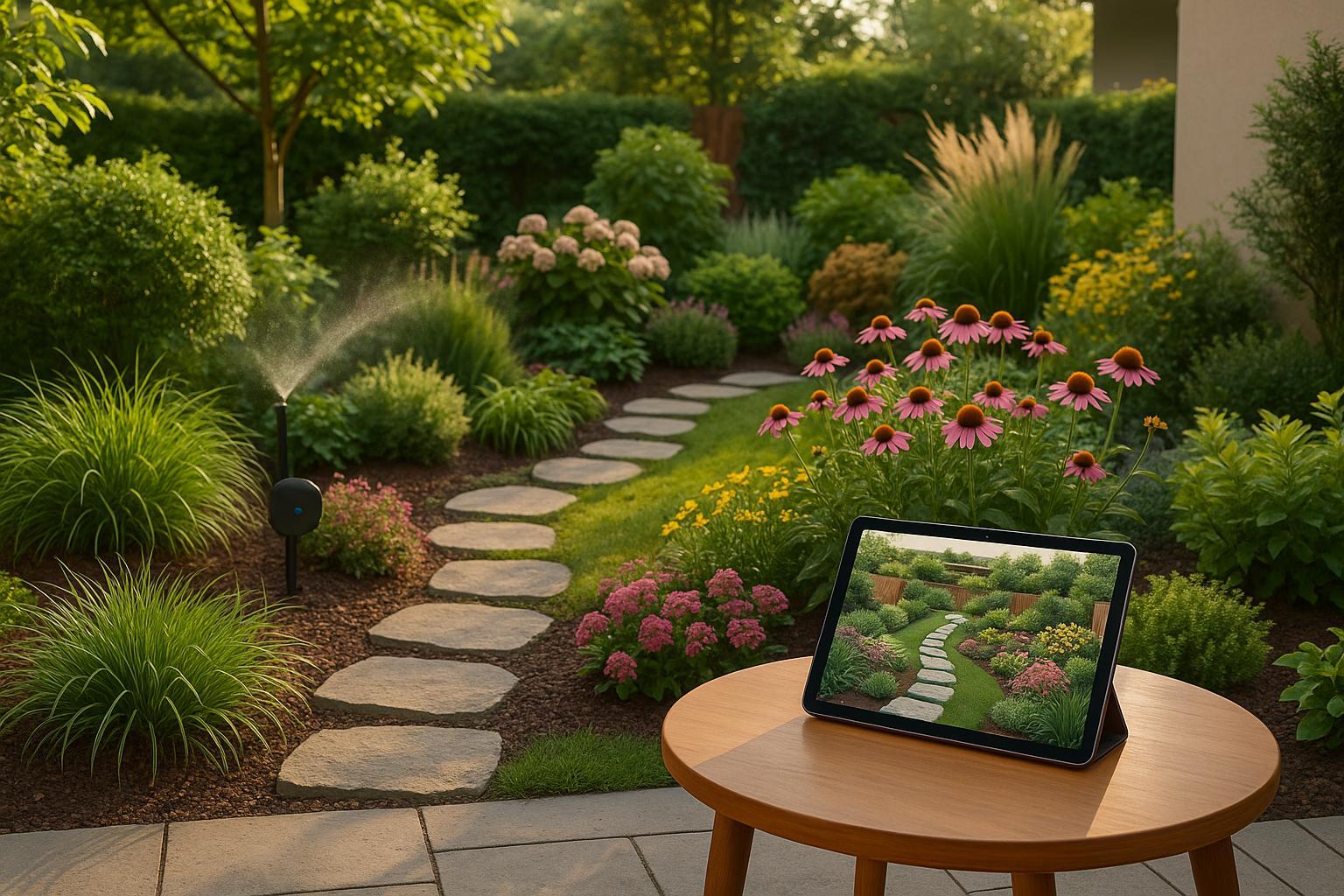
Top 5 AI Features for Garden Design
Explore how AI is revolutionizing garden design, offering personalized styles, plant recommendations, and maintenance forecasting for every gardener.
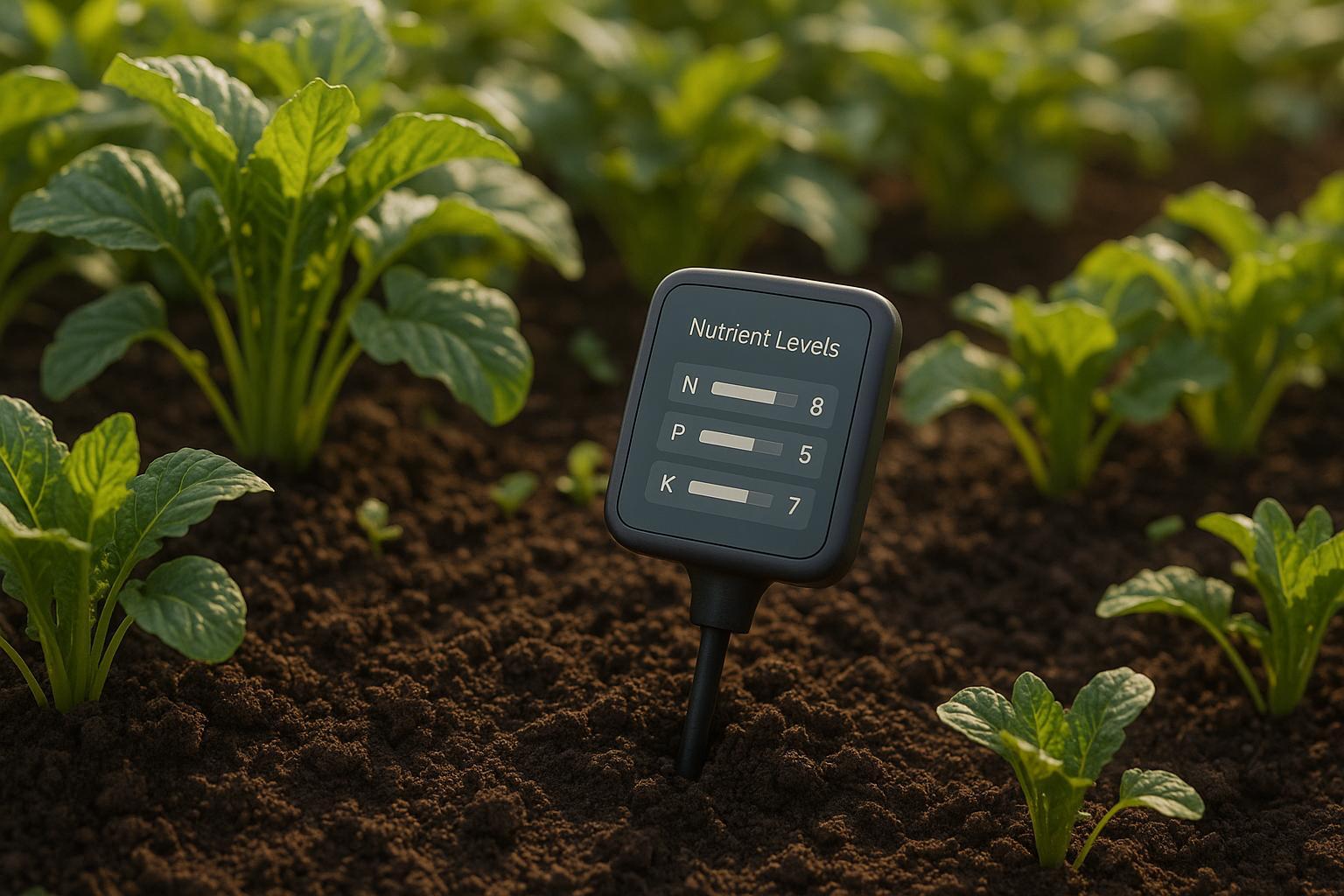
Real-Time Nutrient Monitoring: Benefits for Gardeners
Explore how real-time nutrient monitoring enhances plant care, ensuring healthier growth, cost savings, and timely interventions for gardeners.

Seasonal Garden Design: Lessons from Chinese Practices
Explore seasonal garden design inspired by Chinese practices, blending nature and philosophy for beauty throughout the year.
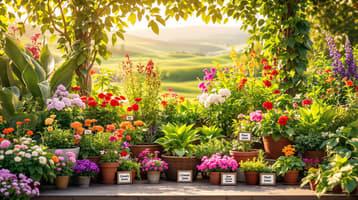
How to Choose Plants for Your Climate Zone: A Beginner's Guide
Learn how to select plants that thrive in your climate zone by understanding local factors, soil testing, and using AI tools for tailored recommendations.
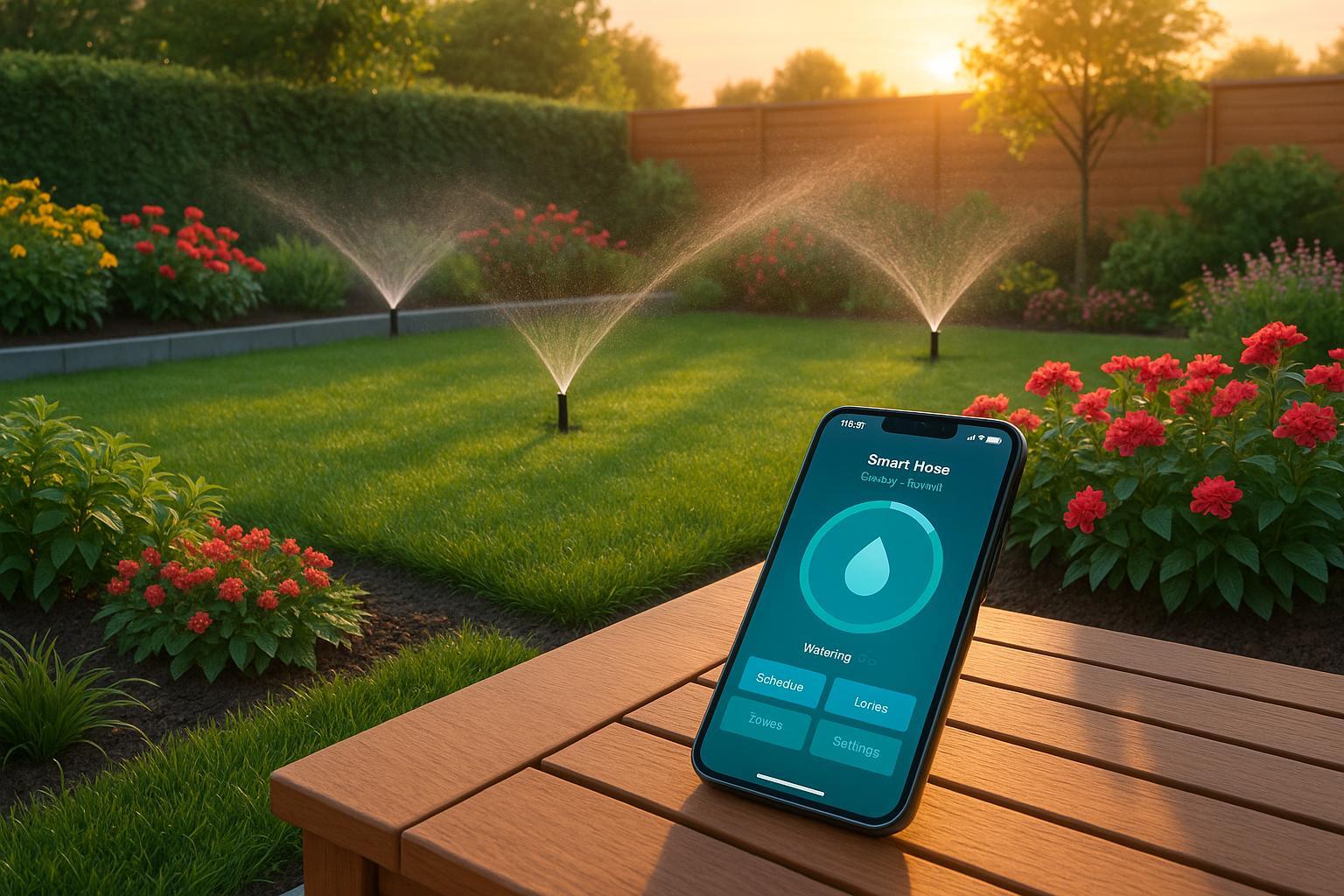
Best Apps for Smart Irrigation Control
Explore the best smart irrigation apps that optimize watering schedules to save water and reduce costs while keeping your garden healthy.
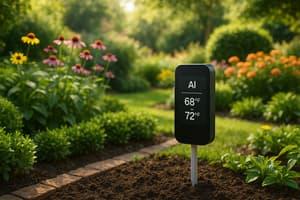
How AI Regulates Garden Temperatures Automatically
AI systems automate garden temperature control, ensuring optimal conditions for plants while conserving energy and resources.